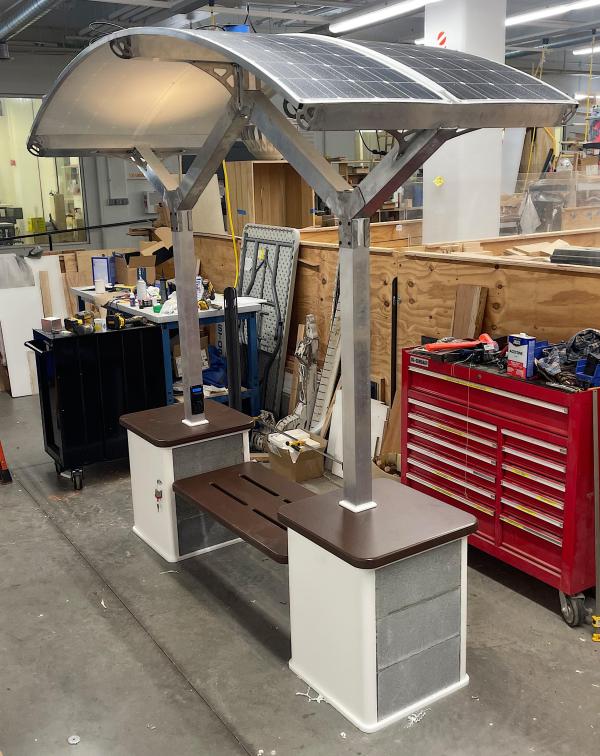In the US, we’re starting to see some pushback against hostile architecture, and in this vein, [benhobby] built a swanky public power and Wi-Fi access point.
This beautiful piece of infrastructure has 400 watts of solar plugged into 1.2 kWh of battery storage, and can dispense those electrons through any of its 120 VAC, USB-C, or USB-A plugs. The uprights are 3″ aluminum tubing attached to a base consisting of cinder blocks and HDPE panels. Power receptacles are housed in 3D printed enclosures with laser cut acrylic fronts. Three outdoor lights illuminate the stop at night, triggered by a photosensor.
The electronics and battery for the system, including the networking hardware, are in a weatherproof box on each side that can be quickly disconnected allowing field swaps of the hardware. Troubleshooting can then take place back at a workshop. One of the units has already been deployed and has been well-received. [benhobby] reports “There’s one in the wild right now, and it gets plenty of visitors but no permanent tenants.”
Want to see some more interesting hacks for public infrastructure? Check out this self-cooling bus stop, this bus bloom filter, or this public transit display.














